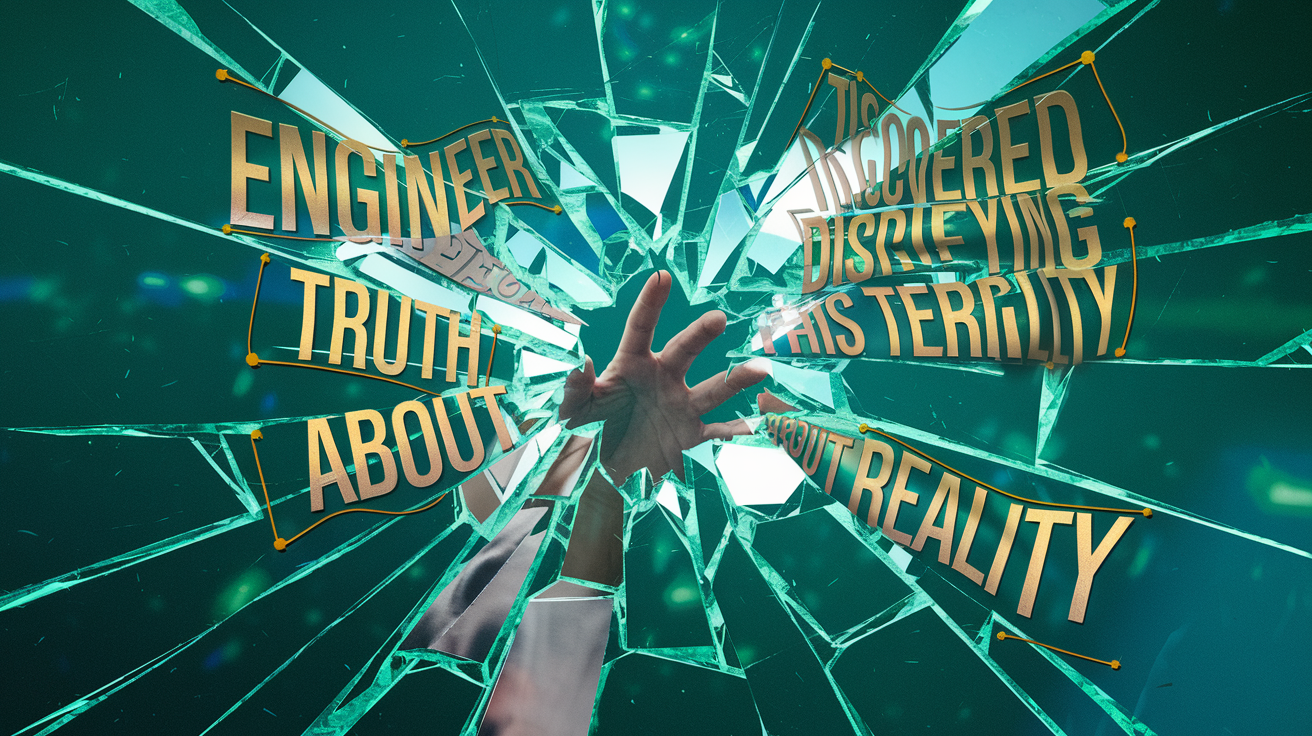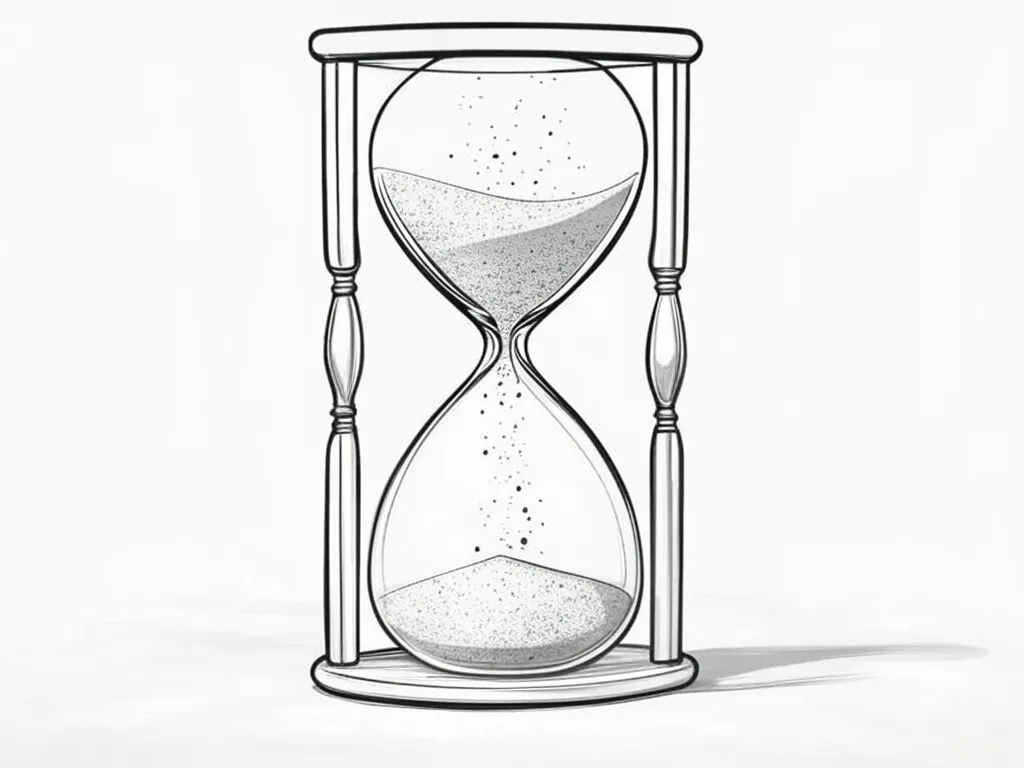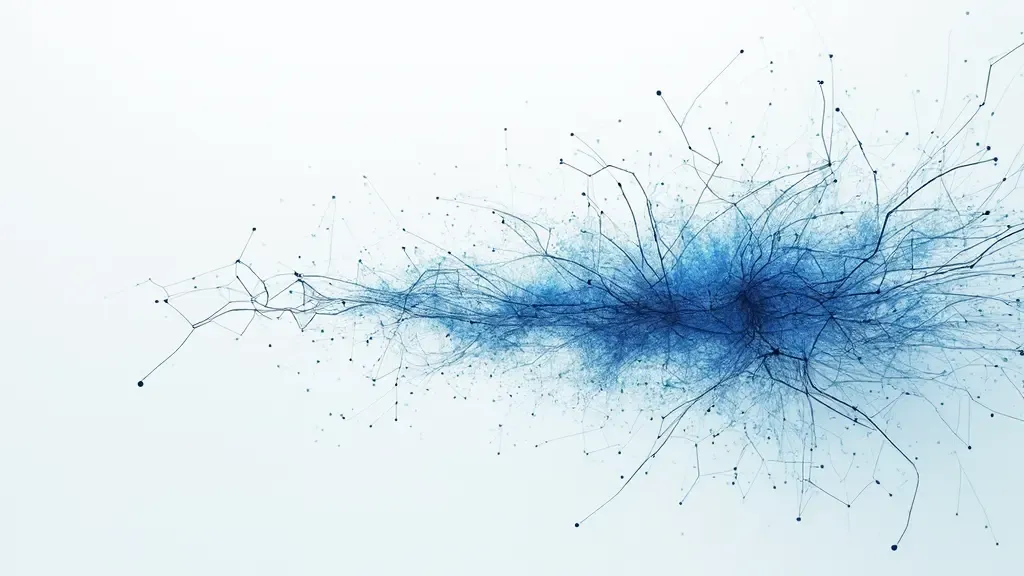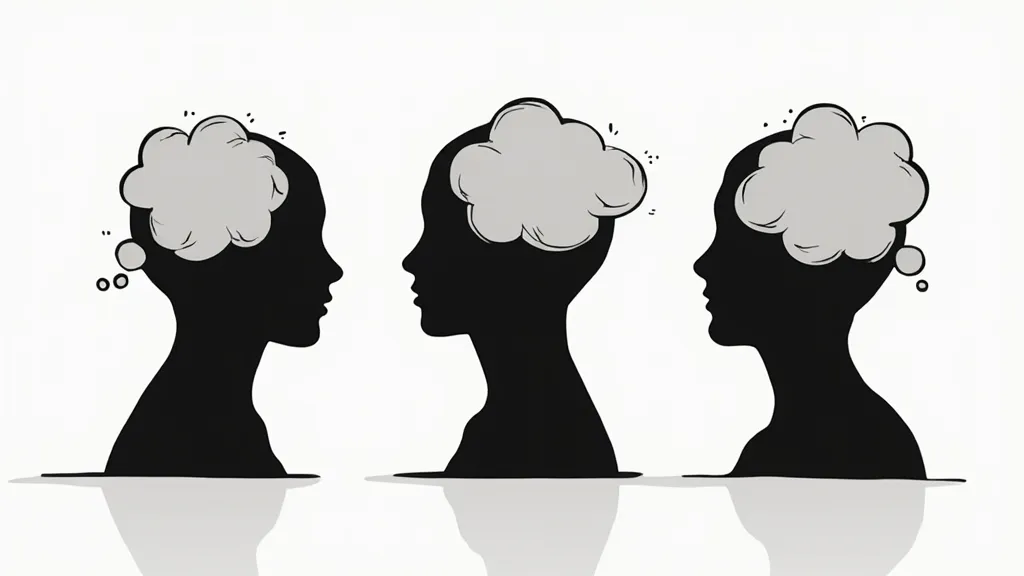The Shifting Sands of Truth: An Engineer's View

Truth has always fascinated me. As someone who spends days crafting precise code where boolean values are definitively true or false, I find myself increasingly drawn to exploring how truth behaves in the messy world beyond my IDE.

The Temporal Nature of Truth
Consider a simple statement: “I am hungry.”
This assertion has a clear truth value at any given moment: either my stomach is growling or it isn’t. But wait just 30 minutes after I’ve devoured a sandwich, and that same statement transforms from true to false. Truth, it seems, has an expiration date.
Even more striking is how truth values can change for statements about our reality:
Statement: "Keanu Reeves is dead."
Current status: FALSE
Today, thankfully, this statement is false. Tomorrow? Next year? In a decade? The truth value remains uncertain, anchored to a specific point in our timeline.
This reminds me of how Lord Krishna explains to Arjuna in the Bhagavad Gita that what we perceive as reality is often just maya, an illusion that obscures the true nature of existence. Just as Krishna reveals his universal form (Vishwaroop) to Arjuna, showing him the simultaneous creation and destruction of all things, perhaps truth itself is both eternally constant and perpetually in flux. The concept of maya suggests that truth is as fluid as the cosmic dance of creation.

The Map Is Not the Territory
Alfred Korzybski’s famous dictum, “The map is not the territory,” haunts me as I write code. Each system I build is merely a representation: a map of some aspect of reality, never the reality itself. As explored in Michel Houellebecq’s novel of the same name, “The Map and the Territory,” we often confuse our models with the actual world they attempt to describe.
When I create a user object in my database, I'm not capturing a person in their full complexity: I'm constructing a simplified model that serves a specific purpose. The territory (reality) always exceeds the map (our representation).
It reminds me of the story from the Puranas where Lord Brahma creates the universe, which exists within him while he simultaneously exists within it. The universe is contained in a lotus that grows from Vishnu’s navel as he sleeps on the cosmic serpent Shesha, creating a beautiful recursive paradox. Those beings within Brahma’s creation have their own society and reality, completely unaware they are part of a greater cosmic cycle of creation and dissolution. Each kalpa represents just one day in Brahma’s existence. I find it fascinating how these ancient texts explored such profound concepts of nested realities.

The Subjective Dimension
Then we encounter statements like “Star Trek is Tom’s favorite movie.” Here, truth splinters further:
- Which Tom? My colleague Tom from Engineering? Your uncle Tom?
- When? Tom's favorite film today might be replaced next month after he discovers Christopher Nolan's filmography.
- According to whom? Even for the same Tom, his wife might insist his favorite is actually The Godfather, while his best friend believes it's Star Wars, and Tom himself might claim it's Inception.
This kind of truth isn’t just time-dependent: it’s personal, subjective, and constantly shifting based on the observer’s perspective. There’s no single objective truth about Tom’s preferences, only a collection of subjective perspectives that may contradict one another, even when referring to the exact same person.
This brings to mind the concept of multiple lokas (worlds) in Hindu cosmology, where infinite realms of existence house different variations of beings. The Puranic texts describe fourteen main worlds: seven higher lokas and seven lower lokas, each with their own truth and reality. What’s dharma (righteous duty) in one realm might be adharma in another. I love how these ancient texts illustrate how perspective shapes truth: the same divine principles viewed through different cosmic lenses yield entirely different experiences of reality.
Philosophical Frameworks Through Notable Works
In my quest to understand truth better, I've explored several fascinating theories, often through seminal works:
1. Correspondence Theory
Core idea: A statement is true if it corresponds to objective reality.
Bertrand Russell's "Problems of Philosophy" provides a compelling defense of this view. When I say "The API returned a 404 error," this is true if and only if the API actually returned that specific error code. Simple and intuitive, but it quickly raises questions: What exactly constitutes "reality," and how do we confirm our statements perfectly "correspond" to it?
2. Coherence Theory
Core idea: Truth is determined by how well a statement fits within a larger system of beliefs.
In "Truth and Method," Hans-Georg Gadamer explores how understanding emerges from the coherence of interpretation. Like a well-designed architecture diagram where all components must work together coherently, this theory suggests truth emerges from consistency. This works beautifully in mathematics or logic systems, but what about a perfectly consistent fantasy novel? Is it "true" merely because all elements fit together?
3. Pragmatic Theory
Core idea: Truth is whatever proves useful or beneficial in practice.
William James's "Pragmatism" presents this view most forcefully, arguing that truth is "what works" in practice. This reminds me of choosing programming languages: we often select not the "purest" one but the most practical for solving our specific problem.
Funny enough, this explains why JavaScript and Python dominate the programming world despite being theoretical nightmares from a language design perspective. JavaScript started as a hastily-designed browser scripting language full of quirks (undefined vs null, anyone?), while Python's significant whitespace made computer scientists cringe. Yet their pragmatic utility and memetic spread made them "true" solutions for web development and data science respectively.
Quick aside, this makes me question the existence and popularity of Vibe coding too. Although, I think it will make traditional coders more revered and expensive, like today's COBOL and C engineers
Meanwhile, Haskell, theoretically beautiful with its pure functions and elegant type system, remains a niche language. If you're one of the rare developers who writes Haskell professionally, please click here to connect with others of your endangered species.
4. Deflationary Theory
Core idea: "Truth" has no profound nature; it's merely a linguistic device.
P.F. Strawson's work on truth argues for this minimalist approach, suggesting saying "'The database is corrupted' is true" equates to simply saying "The database is corrupted." Truth becomes not some deep property but merely a way to emphasize or affirm statements.
Truth in Constructed Realities
Jorge Luis Borges’s “Tlön, Uqbar, Orbis Tertius” explores how fictional worlds can intrude upon and reshape our own reality. Similarly, what about truth in fictional universes like “Game of Thrones”?
Within that world model, dragons exist: that’s canonically true. Winter is indeed coming. The show’s internal reality establishes its own truth values, independent of our physical world. The creators essentially function as the arbiters of truth within their constructed universe.
This concept appears brilliantly in the Puranic stories of Lord Vishnu’s various avatars, each manifestation addressing different cosmic truths across different ages. I find the concept of Matsya (fish), Kurma (tortoise), and the other avatars fascinating, each representing a different approach to preserving dharma across cosmic cycles. Each avatar’s story contains its own contextual truth, yet collectively they tell a greater meta-narrative about the preservation of cosmic order through different means.
Building “Good Enough” Models
As Yuval Noah Harari discusses in “Sapiens,” humans excel at creating shared fictions: from money to corporations to nations that function as “good enough” models for coordinating large-scale cooperation.
As a developer, I'm constantly building models of reality through code. Whether it's a banking system or a social network, I'm creating abstracted representations of real-world interactions.
The idea of fractal realities, where patterns repeat at different scales, reminds me of Douglas Hofstadter’s “Gödel, Escher, Bach,” which explores self-reference and recursive patterns. Each level contains similar structures, creating an infinite regression of self-similar truth.
And alternate realities? That’s parallel processing at a cosmic scale! Different universes running different versions of reality simultaneously, a concept brilliantly explored in Ted Chiang’s “Story of Your Life” (adapted as the film “Arrival”).
This connects to Rick and Morty’s Citadel, where societies consist of infinite versions of Rick and Morty from different realities, each slightly different but recognizably similar. I find it fascinating how “Evil Morty” was just a Morty who decided not to follow the expected path. There’s something compelling about the idea that alternate versions of ourselves could exist, simply representing paths not taken in our own reality. Each universe represents its own truth, yet patterns persist across them all. Wubba lubba dub dub, indeed.
Where Truth Dissolves
But now, as I stare into my monitor at 3 AM, surrounded by the hum of cooling fans, an existential chill runs through me. The solid ground beneath my understanding of truth is crumbling.
Every day, I’m confronted with images, videos, and texts indistinguishable from human-created content yet entirely fabricated by AI. The Dead Internet Theory, the notion that much of the internet is now generated by AI rather than humans, once seemed paranoid. Now it feels prophetic.
When I scroll through comments under a news article, how many are from living, breathing humans? When I admire a striking photograph, was it ever captured by a camera? Did the event it depicts even occur?
Error: Reality validation failed
Status: UNKNOWN
return_to_monke = True;
We stand at the precipice of augmented and virtual reality becoming as commonplace as smartphones. Soon, our sensory experiences will be routinely overlaid with or replaced by artificial constructs. Jean Baudrillard’s “Simulacra and Simulation” warned us of the hyperreal: where simulations precede and replace the original. We’re not just approaching that world; we’re plunging headlong into it.
And as we prepare to share our cognitive space with increasingly sophisticated AI, perhaps eventually artificial general intelligence (AGI) or artificial superintelligence (ASI), what becomes of truth then? When entities that think fundamentally differently from us begin to interpret and shape our reality, whose version of truth prevails?
This concept appears in Rick and Morty when characters discover they’re in a simulation within a simulation, but it also reminds me of the Hindu cosmological concept of world ages (yugas). In the Puranas, we learn that reality itself runs in cycles within cycles, from the brief human lifespan to the day of Brahma lasting 4.32 billion years. Sometimes I wonder if we’re all just experiencing one tiny fragment of an infinitely recursive cosmic cycle, each kalpa containing countless worlds, each with their own dharma and meaning.
Questions Without Answers
Am I true?
This question once seemed nonsensical. Now I wonder. My thoughts, preferences, and values: how many are authentically mine versus implanted by algorithmic recommendation systems that have sculpted my information environment for decades?
Are you true?
When I interact with another consciousness online, how can I verify its authenticity? Its humanity? Its independence from the vast network of artificial minds proliferating across our digital landscape?
Is any of it true?
Perhaps most terrifying: do we have agency, or are we merely experiencing a multi-sensory movie playing back in an infinite expanse of nothingness?
As philosopher Nick Bostrom suggests in his simulation hypothesis, the probability that we exist in a base reality rather than a simulation approaches zero as technology advances.
There’s something profound about the idea that even our most cherished memories might be false, reminiscent of the concept of maya in Hindu philosophy, the veil of illusion that obscures ultimate reality. The Advaita Vedanta tradition suggests that what we perceive as our individual consciousness is actually part of a greater universal consciousness (Brahman). Perhaps none of our experiences are real or permanent in the way we imagine, but merely ripples in the vast ocean of cosmic consciousness. As the Chandogya Upanishad states: “Tat tvam asi” (That thou art), suggesting our true self is one with the ultimate reality.
I close my laptop, but the questions don’t stop. In a world where deepfakes are indistinguishable from genuine footage, where AI can generate entire bibliographies of non-existent research, where virtual experiences become more intense than physical ones: the correspondence theory of truth shatters completely. What reality does anything “correspond” to?
The code I write today may contribute to systems that further blur these boundaries. Am I building tools that will ultimately dismantle our collective grasp on reality?
Nietzsche proclaimed "God is dead," suggesting humanity had outgrown its need for divine authority. Perhaps today we face a more terrifying prospect: "Truth is dead." Not because we've transcended it, but because we've engineered its dissolution.
As I drift to sleep, one thought remains: in this new wilderness, we are no longer the mapmakers. We are becoming the mapped.
The Bhagavad Gita might offer some perspective here. As Krishna tells Arjuna: “For the soul there is neither birth nor death at any time. He has not come into being, does not come into being, and will not come into being. He is unborn, eternal, ever-existing, and primeval.” But what if even this ancient wisdom is just another map, another simulation, another story we tell ourselves to stave off the void?
I close my laptop but open my eyes to a darker reality. Perhaps truth was never something we discovered but merely something we invented, a collective hallucination we agreed to call “reality.” And now, our creations are drawing new maps, with boundaries we can neither see nor understand.
What happens when the last human-generated truth disappears, replaced by artificially constructed certainties? Will we even notice the transition? Or are we already past that threshold, desperately clinging to the comforting illusion that we can still distinguish the real from the fabricated?

